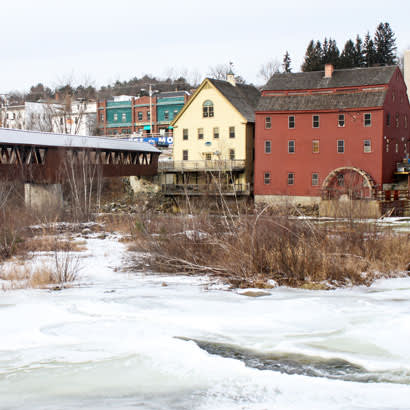
One of the best parts of working for an association is speaking with members from across the country about the important work they are doing for their local communities. It’s even better when I get to travel to different locations to see their work firsthand. Several communities have welcomed the Public Policy team over the past year, from small towns to major metropolitan areas. These travels and frequent conversations with you, the members of NRPA, have sparked my excitement and interest in the various ways departments of all sizes are using federal government resources to make projects happen. Following are highlights from a few departments of various sizes and some of the federal money they have received for park and recreation projects.
Littleton, New Hampshire
Nestled along the Ammonoosuc River in Northern New Hampshire, near the border of Vermont, is the idyllic town of Littleton, New Hampshire. With around 6,000 people, as of the last census, Littleton is full of small-town charm and pride, but certainly punches above its weight for access to federal resources. While visiting Littleton this fall as part of a conference, I was struck not only by the fall beauty of this community, but also by how much it has going on for a town of its size.
Littleton is a prime example of how small communities can leverage federal dollars to benefit its residents. Its park and recreation department consists of its director, Chris Wilkins, a full-time groundskeeper and a part-time, year-round employee. Wilkins and Town Manager Andrew Dorsett work extensively to identify and seek out federal funds. Wilkins also shared that although much of the work is done by him and the town manager, he does enlist the help of a grants firm in the process of identifying opportunities and applying.
Recently, Littleton received a $200,000 grant, through the Land and Water Conversation Fund (LWCF) State Assistance Program, for a health park that will allow its population to get outside and active. While some communities struggle with the matching funds required by the LWCF, Littleton has leveraged the federal support to get the local support needed to participate in the program. As with many federal programs, each state has its own process for applying for these programs. More information can be found by contacting your state’s recreation or natural resources office.
Park and recreation centers are one of the largest providers of summer meal programs for youth nationwide. Littleton is also a summer meal program site through a federally funded program, called the Summer Food Service Program (SFSP), that is administered by the United States Department of Agriculture. During the summer at two different sites, this small town serves more than 100 meals a day to youth under the age of 18, including the young counselors who work with kids.
Littleton proves that no matter your size, SFSP is a great program for your department to consider if you have kids in your recreation centers and parks throughout the summer. Offering nutritional support to youth and even seasonal staff under age 18 allows the communities you serve to stay active and healthy over the summer months. However, SFSP programs can only be set up in eligible areas, so before contacting the state agency responsible for this program in your state, visit the USDA Summer Food Service Program website for initial details.
Tacoma, Washington
Tacoma, on Washington’s Puget Sound, is home to an estimated 208,100 people. It may not be as large as Houston, Chicago or New York, but this growing city, through its Metro Parks Tacoma, has done some amazing things with the help of the federal government. One special project is a $32 million community center for the east side community of Tacoma. The Eastside Community Center was the idea of a young person whose life was tragically cut short by gun violence, visit NRPA's blog to read more. The community worked with Metro Parks Tacoma to push for funding for this center from all levels, including the federal government.
After a meeting with U.S. Representative Denny Heck, the congressman suggested the community consider the New Markets Tax Credit (NMTC) program. Established in 2000, NMTC allows individuals and corporations to invest in community development entities in exchange for a credit against their federal income tax. These community development entities then use these funds to provide loans to communities and businesses in low-income communities. The benefit to the low-income community comes in the form of better loan rates and terms, along with more flexibility than would be provided on the normal market. Metro Parks Tacoma was able to use $7 million in NMTC funding for the Eastside Community Center. This funding was just a portion of the overall money needed, but the department was able to leverage the federal funds to secure other funding streams.
Littleton and Metro Parks are just a few examples of how departments of various sizes are making federal dollars work for their communities. The available resources don’t stop at the examples mentioned here. Community Development Block Grants, FEMA Disaster Mitigation Fund and the Clean Water State Revolving Fund are just a few examples of other federal programs that may be available to your department. It also doesn’t take a giant department with multiple people spending the entire day looking for federal resources, but it may take a bit of digging. The NRPA Connect message board and Public Policy team are great resources for your department, as is talking with others about the federal resources they’ve used.
Kyle Simpson is an NRPA Senior Government Affairs Manager.

